Diu Fort was built in 1535 by Portuguese to protect themselves from the invasion of Mughals, Gujarat Sultanate, and Rajputs. The rule of Portuguese was started in 1537 and ended in 1961 though India got independence in 1947. The Indian Government launched Operation Vijay and forced the Portuguese to leave India.

Diu
Diu is a Union Territory of India that is governed by Central Government of India. It was under Portuguese till 1961. Diu was a very important trade route of Arabian Sea. In 1509, there was a battle between Portugal and forces of four countries. Portuguese tried to annex Diu in 1513, 1521, 1523, 1531 but were unsuccessful. So they made a peace treaty with Bahadur Shah of Gujarat in 1535 who allowed them to build Diu Fort.
Visiting Hours
Tourists can visit the fort from morning at 8:00am to 6:00pm in the evening. It takes around two to three hours to visit the whole fort. The fort is opened on all days of the week.
Tickets
There is no entry fees to visit the fort.
Where to Stay?
There are many hotels and resorts where tourists can stay. The hotels can be divided into various categories like star hotels, budget hotels, luxury hotels etc. Diu also have resorts and bungalows where tourists can stay.
Best time to visit
Diu has a very pleasant climate and the people can visit the place all the year round. If the climate is considered then Diu can be visited from October to May. If festivals are concerned then Diu can be visited during the months of October and November as Navratri is celebrated during this time.
Diu Fort - History
Diu has a long history before the rule of Portuguese. The union territory was ruled by Mauryans, Kshatrapas, Guptas, Maitrakas, Chavda dynasty, Chalukyas, and Portuguese. The ruling periods of these dynasties are as follows −
- Mauryans – 322 to 320BC
- Kshtrapas – 1 to 415AD
- Guptas – 415 to 467AD
- Maitrakas – 470 to 788AD
- Chavda – 789 to 941AD
- Portuguese – 1537 to 1961AD
Prior to Portuguese, Diu was under Muslim rule. In 1297, Alauddin Khiljidefeated the Rajputs and made Diu his territory. After that Diu was under Muslim rule for about one and a half century.
Diu Fort under Bahadur Shah and Portuguese
Sultan Bahadur Shah of Gujarat annexed Diu in 1530AD. He built many structures for the security of Diu which were knocked down by Portuguese to make their structures. The Portuguese tried to annex Diu to their kingdom many times but they failed. In 1531, they captured Shiyal Bet island under Nuno da Cunha and started bombing Diu but were not able to occupy it.
In 1534, the Portuguese signed a Treaty of Bassein and through which the occupied Bassein now known as Vasai. Bahadur Shah had a threat from Mughal Emperor Humayun so he made a peace treaty with Portuguese. According to this treaty, they got permission to build a fort in Diu.
Later, Bahadur Shah had no trust on Portuguese and he attacked them but was killed in the war. His body was thrown into the sea. Mahmud Shah III, nephew of Bahadur Shah, succeeded him. Diu was under Portuguese since 1961 and after that Indian govt. forced them to leave the place through Operation Vijay.

Turk Attack
Turks attacked Diu in 1538 and besieged the fort. The force included 20,000 men and 66 ships. They bombarded the fort many times. When they were about to win, they lifted up the siege. The reason for uplifting the siege is not known but from that time onwards, Turks never attacked India.
Diu Fort - Architecture
Location
Diu Fort is also known as Portuguese Fort. In Portugal it is called Praça de Diu. Gujarat is in the east while Arabian Sea is in the west. Kolak and Kalai rivers are on north and south respectively. Diu touches the borders of Valsad, Daman, and Junagarh.
Architecture of the Fort
One of the walls of this large fort touches the coastline. The fort is surrounded by sea water on three sides. The guns were put on the bastions built on the inner side of the wall. There is a double moat between outer and inner walls and is made up of sandstone rocks.
There are three gates in the fort out of which the entry gate includes five windows. Opposite to the fort, Panikotha fort is visible. Diu fort also consists of cannons and iron shells used during the Portuguese period. There is a bastion at the entrance gate named St. George. The fort has a large light house at its end. Tourists can view many monuments inside the fort. Some of them are discussed here.
Saint Francis of Assisi Church
Saint Francis of Assisi Church was built in 1593 in front of a plateau. The plateau is located on a hilltop and is built according to the European architecture. The church can be entered through a gate by going up through stairs. The church has now been converted into a hospital.
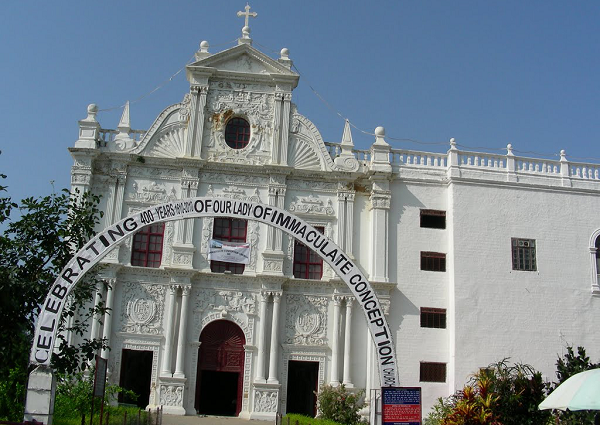
Saint Paul’s Church
The construction of St. Paul’s Church was done in between 1601 and 1610 on Portuguese architecture called Baroque style. This architecture was also adopted by many countries like Italy, Spain, America, etc. The terrace of the church is very large. The church was renovated in 1807.

St. Thomas Church
St. Thomas Church was constructed on the basis of Gothic architecture in 1598 by the Portuguese. The church has now been abandoned and is only functional on 1st November. In 1998, it was converted into a museum which consists of old stone inscriptions, idols, sculptures, and statues. The church has the statues of Jesus Christ and Virgin Mary. Along with it, there are statues of St. Thomas and St. Benedict which are 400 years old and made up of wood and marbles.
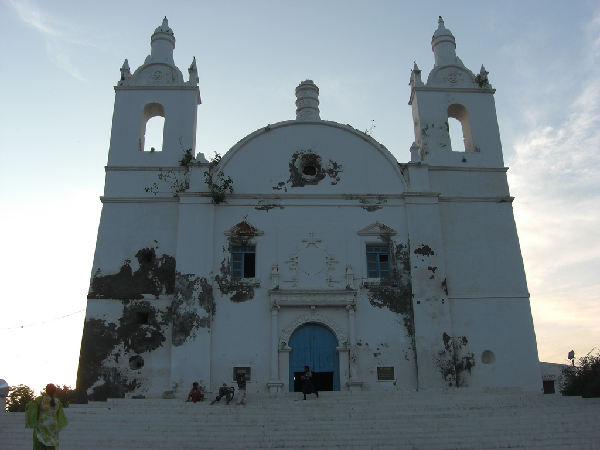
How to Reach Diu Fort?
Diu is a union territory which is administered by the Central Government of India. It is connected to major cities by road and air transport. There is no direct train service but there are few stations nearby Diu and from there tourists can use road transport to reach Diu. Major cities with their distance by air from Diu are as follows −
- Diu to Bhavnagar – 170km
- Diu to Rajkot– 179km
- Diu to Surat – 202km
- Diu to Mumbai – 271km
- Diu to Ahmedabad – 358km
- Diu to Jamnagar – 218km
By Air
Diu airport is connected to major cities of India and they include Mumbai, Ahmedabad, Bhuj, Lucknow, and others. People can get direct flight from these cities to Diu. Mostly Air India flights take-off and land here.
By Rail
There are no direct trains from Diu. The nearest meter-gauge railway station is Delwada which is around 8km from Diu. The nearest broad-gauge railway station is Veraval which is 90km away from Diu and is connected with many major cities like Ahmedabad, Mumbai, Rajkot, etc.
By Road
Diu has Jethibai bus stand from where tourists can catch buses for Mumbai, Ahmedabad, Veraval and other nearby places. Private bus service providers are also there that serve the purpose of connecting the tourists with other places through their bus services.
Local Transport
People can roam around Diu through local transport which include autos and local bus services. The tourists also have the option of renting two-wheelers like bikes, mopeds and cycles to visit Diu.
Diu Fort - Nearby Places
Diu is a very small place but still it has many places to visit. There are beaches, temples, and churches which the tourists can visit after roaming inside the fort. Some of these places are as follows −
Ghoghla Beach
Ghoghla beach is around 15km away from Diu Fort and is considered to be one of the most beautiful beaches in India. Accommodation and food facilities are also available here and tourists can stay comfortably in the hotels.
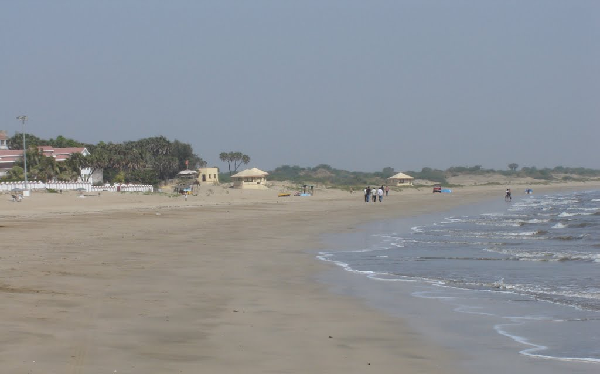
Naida Caves
Naida caves are one of the major attractions of Diu which were created by Portuguese when they dug rocks for construction. During Operation Vijay, Portuguese hid themselves in these caves. There is an opening in the caves through which sunlight comes in.

Sunset Point
There is a sunset point on Chakritirath Beach from where people can watch a nice view of sunset. The location of the beach is in the center of Diu. The beach is surrounded by palm trees.
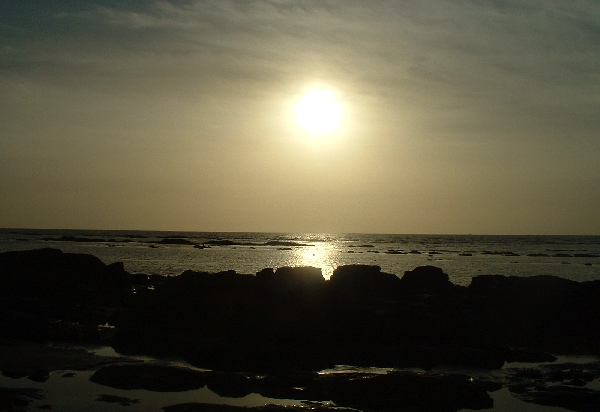
INS Khukri
INS Khukri was a ship that sank during the war between India and Pakistan. The ship sank due to the submarine of Pakistan. When the submarine was detected, this ship was sent along with kirpan ship to destroy the submarine. Khukri was on its mission for testing sonar and when it found that the submarine was attacking kirpan, it went for rescue and was struck by three torpedo missiles fired by the submarine which led to sinking of the ship.
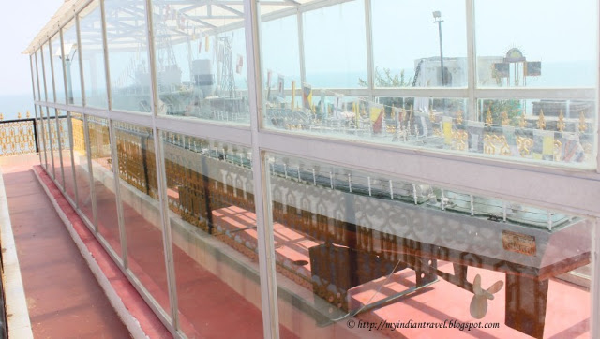
Zampa Gateway
Zampa Gateway is much popular in Diu and it attracts the tourists the most. Zampa Gateway was constructed during the medieval period. The gateway includes carvings of priests, angels, and lions. A chapel was also built near the gateway in 1702.
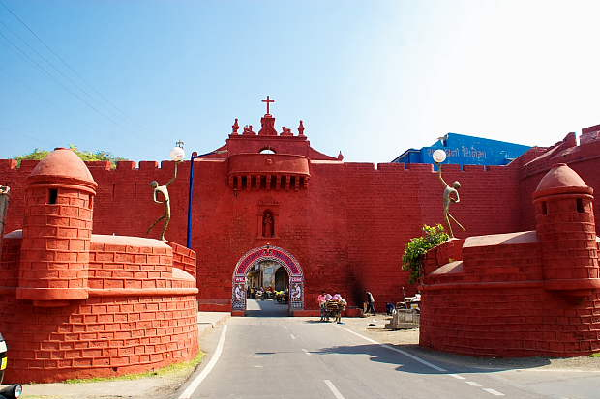
Gangeshwar Temple
The Gangeshwar temple is 3km away from Diu and Lord Shiva is worshipped here. There are five shivlingas which get wet with water during high tides. Hindu mythology says that the lingas were installed by the Panadavas. The temple is built on the sea shore so tourists can hear the noise of the waves that struck with the temple.
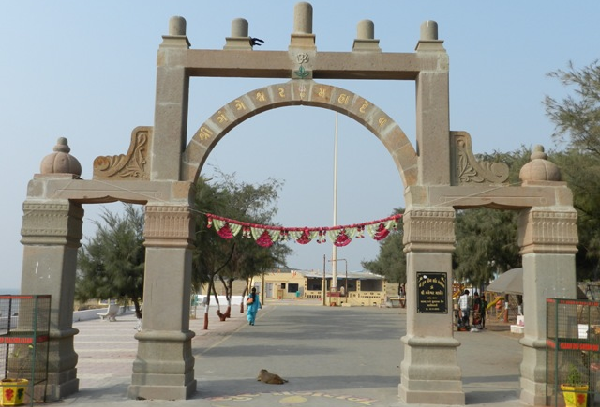

Comments
Post a Comment